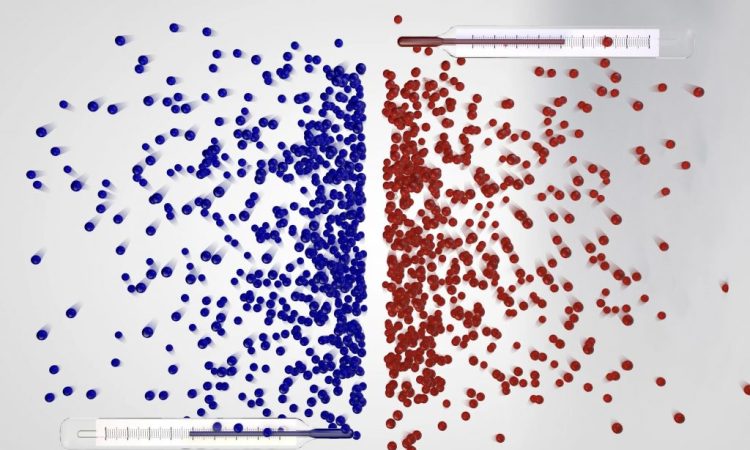
Some physical systems can have a negative temperature on the absolute scale. These temperatures are not colder than zero, but ‘hotter than infinity’.
In 2013, a group of German researchers has demonstrated that it is possible to reach absolute negative temperatures in an ultracold gas of potassium atomsexploiting the particular quantum properties of a state of matter known as the Bose-Einstein condensate. At these temperatures, the behavior of the gas is reversed compared to conventional ones: the higher energy states are more populated than the low energy ones. This result, obtained through precise control of atomic interactions, opens the way to new studies of matter and offers potential developments for the understanding of cosmological phenomena such as dark energy, as well as providing a new tool for the study of complex quantum systems.
Advertisement
From classical to quantum physics
To fully understand this result, it is useful to review the concept of temperature from a quantum perspective. The absolute temperature, as Braun et al. explain, is linked to the variation of entropy with respect to energy. In a “normal” system, entropy increases with energy, resulting in a positive temperature. However, under particular conditions, entropy can decrease with increasing energy, leading to a negative temperature.
The inversion of absolute temperature leads to notable changes in the behavior of systems. For example, in a system at a positive temperature, a heated gas tends to expand, while in a system at a negative absolute temperature the opposite happens: the gas contracts. Similarly, under normal conditions, heat flows from the hotter body to the colder one, but in a negative temperature system, this process is reversed and heat can move from the colder body to the hotter one.
The details of the experiment
By exploiting the quantum properties of ultracold gases, researchers have achieved a temperature below absolute zero. This surprising result has been achieved using a gas of potassium atoms at ultra-low temperature, trapped in an optical lattice. The key to the experiment was to create a system with both lower and upper limits on energy. As the authors explain: “We have created a gas with an inverted energy distribution: many particles have high energies and only a few low energies. This inversion means that the particles have reached an absolute negative temperature.”
From a mathematical point of view, a system at negative absolute temperature behaves as if it were at “infinite temperature”. This is because, under such conditions, the energy distribution is completely reversed compared to the Boltzmann distribution typical of positive temperatures, with a greater probability of finding the system in high energy states rather than in low energy states.
Implications and future prospects
The implications of this discovery are enormous. For example, temperature systems could help better understand the dark energy that pervades the universe and leads to its expansion.
Despite the enthusiasm, there are still many challenges to face. The stability of negative temperature systems is critical for any practical application. The team demonstrated that their system can maintain coherence for over 600 milliseconds under optimal conditions, a significant time in the quantum world.
However, as the authors note, these states are intrinsically metastable and sensitive to external perturbations. Their realization opens up new possibilities for studying fundamental quantum phenomena and future technological applications. As Braun et al. conclude: “Negative temperatures considerably broaden the parameter space for quantum simulations in optical lattices.”
Read more:

